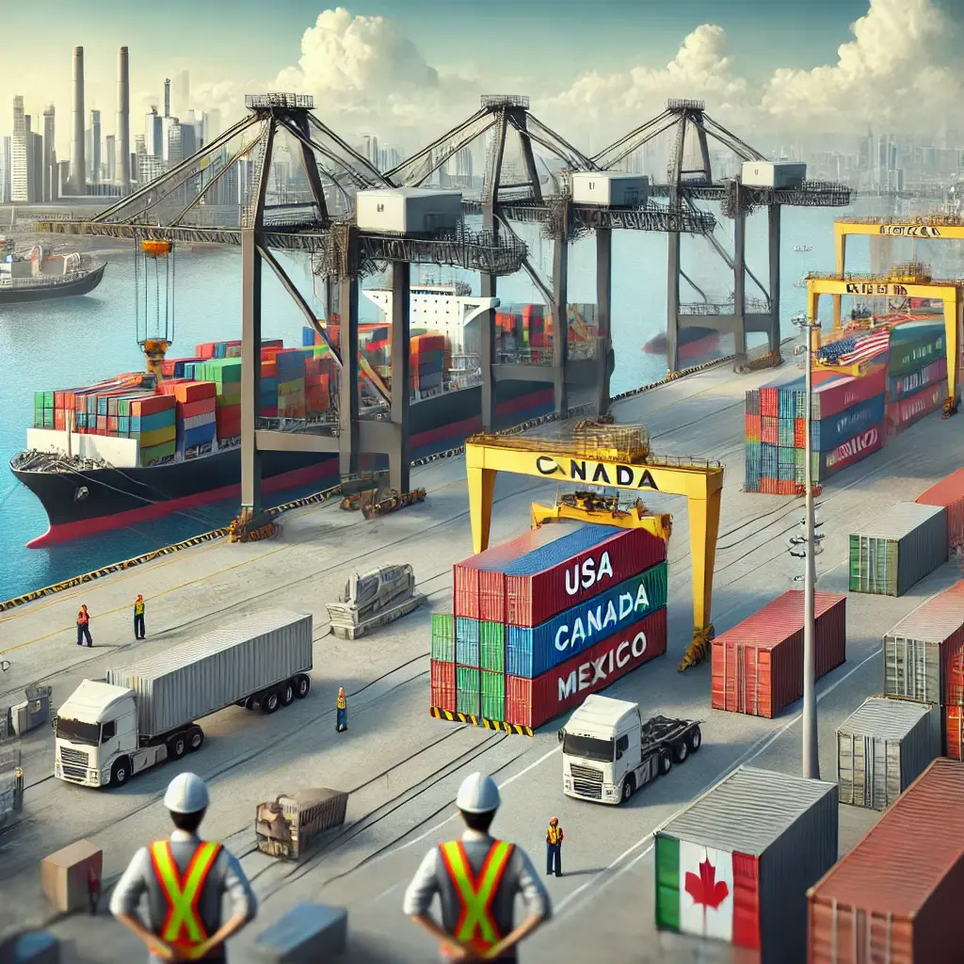(BBR) Washington DC - Former President Donald Trump has long been a proponent of protectionist trade policies, and his return to office in 2025 has reignited global trade tensions. His administration has announced a new round of tariffs on imports from Canada, Mexico, and China—three of the United States’ largest trading partners. These tariffs, intended to reduce trade deficits and bring manufacturing jobs back to the U.S., will have wide-ranging implications for American consumers, businesses, and the broader economy.
What Are Tariffs and Why Do They Matter?
Tariffs are taxes imposed on imported goods, making them more expensive. The goal is to encourage domestic production by making foreign alternatives less attractive. However, tariffs often lead to retaliation, where affected countries impose their own duties on U.S. exports. This creates a trade war, increasing costs for businesses and consumers.
Key Tariffs and Affected Industries
Trump’s 2025 tariff package is targeting a wide range of goods from Canada, Mexico, and China, including steel, aluminum, automobiles, agricultural products, and consumer electronics. Let’s explore how these tariffs and the potential retaliatory measures could affect the U.S. economy.
Tariffs on Canada: Impact on Trade and the Economy
Key U.S. Exports to Canada
Canada is the United States’ largest trading partner, with trade totaling over $700 billion annually. The U.S. exports a variety of goods to Canada, including:
- Automobiles and auto parts
- Petroleum and natural gas
- Machinery and heavy equipment
- Aerospace products (such as Boeing aircraft)
- Pharmaceuticals and medical devices
- Agricultural products (including soybeans, wheat, and corn)
Key U.S. Imports from Canada
Canada provides the U.S. with several critical resources and manufactured goods, including:
- Oil and refined petroleum
- Lumber and wood products
- Aluminum and steel
- Automotive parts and vehicles
- Agricultural products (such as beef, pork, and dairy)
- Paper and pulp products
Economic Impact
Tariffs on Canadian aluminum and steel, which are essential to U.S. manufacturing and construction, will drive up costs for industries that rely on these materials, including automobile and aerospace manufacturers. Higher lumber prices will also increase housing costs in the U.S. as homebuilders face rising material expenses.
In response, Canada is expected to impose retaliatory tariffs on American agricultural and automotive exports, harming U.S. farmers and automakers. This would lead to decreased exports, lower revenues, and job losses in sectors dependent on Canadian demand.
Tariffs on Mexico: Impact on Trade and the Economy
Key U.S. Exports to Mexico
Mexico is the second-largest trading partner of the United States, with trade exceeding $600 billion annually. Key U.S. exports to Mexico include:
- Automotive parts and vehicles
- Machinery and electrical equipment
- Petroleum and refined oil
- Agricultural goods (corn, soybeans, pork, and beef)
- Medical equipment and pharmaceuticals
- Consumer goods (appliances, furniture, and electronics)
Key U.S. Imports from Mexico
- Automobiles and auto parts
- Electronics (TVs, computers, and smartphones)
- Agricultural products (avocados, tomatoes, and berries)
- Machinery and electrical equipment
- Medical devices and pharmaceuticals
Economic Impact
Tariffs on Mexican automobiles and parts will increase production costs for U.S. automakers, leading to higher car prices for American consumers. Given that many American auto manufacturers rely on a tightly integrated North American supply chain, these tariffs will disrupt operations and force companies to either absorb the costs or pass them onto consumers.
Similarly, higher tariffs on Mexican agricultural products will increase food prices in the U.S., making everyday groceries such as avocados, tomatoes, and berries more expensive. Mexico is also likely to retaliate by imposing tariffs on American corn and pork exports, severely impacting U.S. farmers who depend on the Mexican market.
Tariffs on China: Impact on Trade and the Economy
Key U.S. Exports to China
China is the third-largest trading partner of the U.S., with trade totaling over $500 billion. The U.S. exports:
- Agricultural products (soybeans, corn, pork, and beef)
- Aircraft and aerospace equipment
- Semiconductors and technology components
- Medical equipment and pharmaceuticals
- Automobiles
- Natural gas and petroleum
Key U.S. Imports from China
- Consumer electronics (smartphones, laptops, and appliances)
- Textiles and clothing
- Machinery and industrial equipment
- Toys and furniture
- Pharmaceuticals and medical supplies
- Auto parts
Economic Impact
Tariffs on Chinese electronics and machinery will raise costs for American businesses and consumers. With China being a dominant player in global manufacturing, increasing tariffs on imports such as smartphones, laptops, and appliances will result in higher retail prices for consumers.
China has historically responded to U.S. tariffs with its own countermeasures, often targeting American agricultural exports. Given China’s status as the largest buyer of U.S. soybeans, tariffs could devastate American farmers already struggling with declining demand and rising input costs.
Broader Economic Consequences of Tariffs
Inflationary Pressures
Tariffs act as a tax on consumers by increasing the cost of imported goods. As businesses face higher input costs, they pass these expenses onto consumers, leading to overall inflation. With inflation already a concern in 2025, additional price hikes could push the Federal Reserve to maintain higher interest rates, potentially slowing economic growth.
Job Losses in Export-Dependent Industries
U.S. companies that rely on exports, such as agriculture and manufacturing, will face declining revenues due to retaliatory tariffs. This could result in layoffs and production cutbacks, particularly in rural states heavily reliant on trade with Canada, Mexico, and China.
Supply Chain Disruptions
Many American companies depend on global supply chains to manufacture their products efficiently. Higher tariffs will force businesses to either absorb costs, pass them to consumers, or seek alternative suppliers—each option posing its own challenges. This could lead to delays, shortages, and reduced economic efficiency.
Geopolitical Tensions and Long-Term Trade Shifts
The reintroduction of aggressive tariffs will likely push Canada, Mexico, and China to strengthen trade relationships with other countries, reducing their dependence on U.S. goods. This could have long-term consequences, shifting supply chains away from the U.S. and diminishing American influence in global trade.
Conclusion: The Cost of Trade Wars
While the Trump administration’s tariffs are aimed at boosting domestic industries and reducing trade deficits, they come with significant economic risks. Higher consumer prices, job losses, and supply chain disruptions are just a few of the potential consequences. Retaliatory measures from Canada, Mexico, and China will further hurt American exporters, particularly in agriculture and manufacturing.
Instead of imposing broad tariffs, policymakers should seek alternative strategies to strengthen the U.S. economy, such as investing in domestic manufacturing, expanding trade agreements, and fostering innovation. A well-balanced approach will ensure the U.S. remains competitive in the global marketplace without triggering economic hardships for consumers and businesses.
The Economic Impact of Donald Trump’s 2025 Tariffs on Canada, Mexico, and China
Typography
- Smaller Small Medium Big Bigger
- Default Helvetica Segoe Georgia Times
- Reading Mode
















